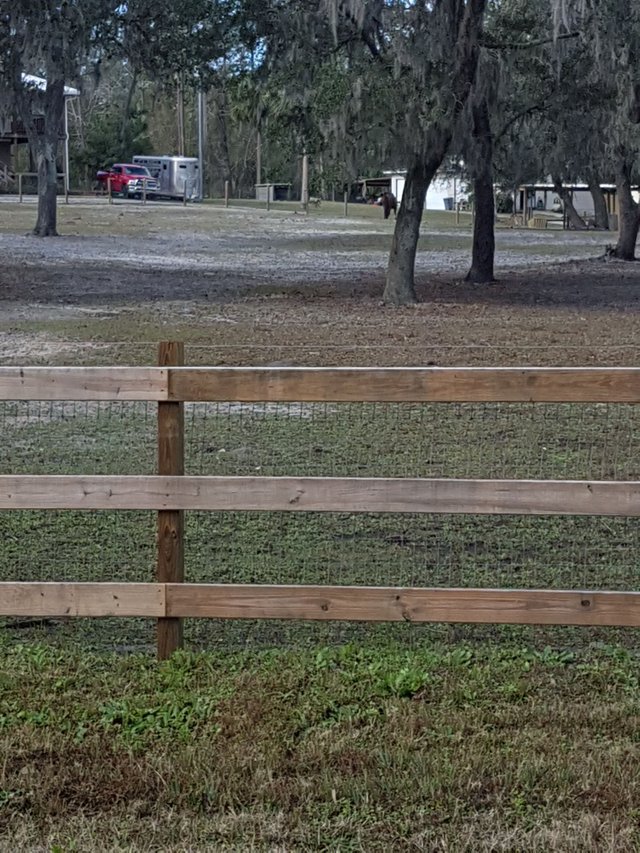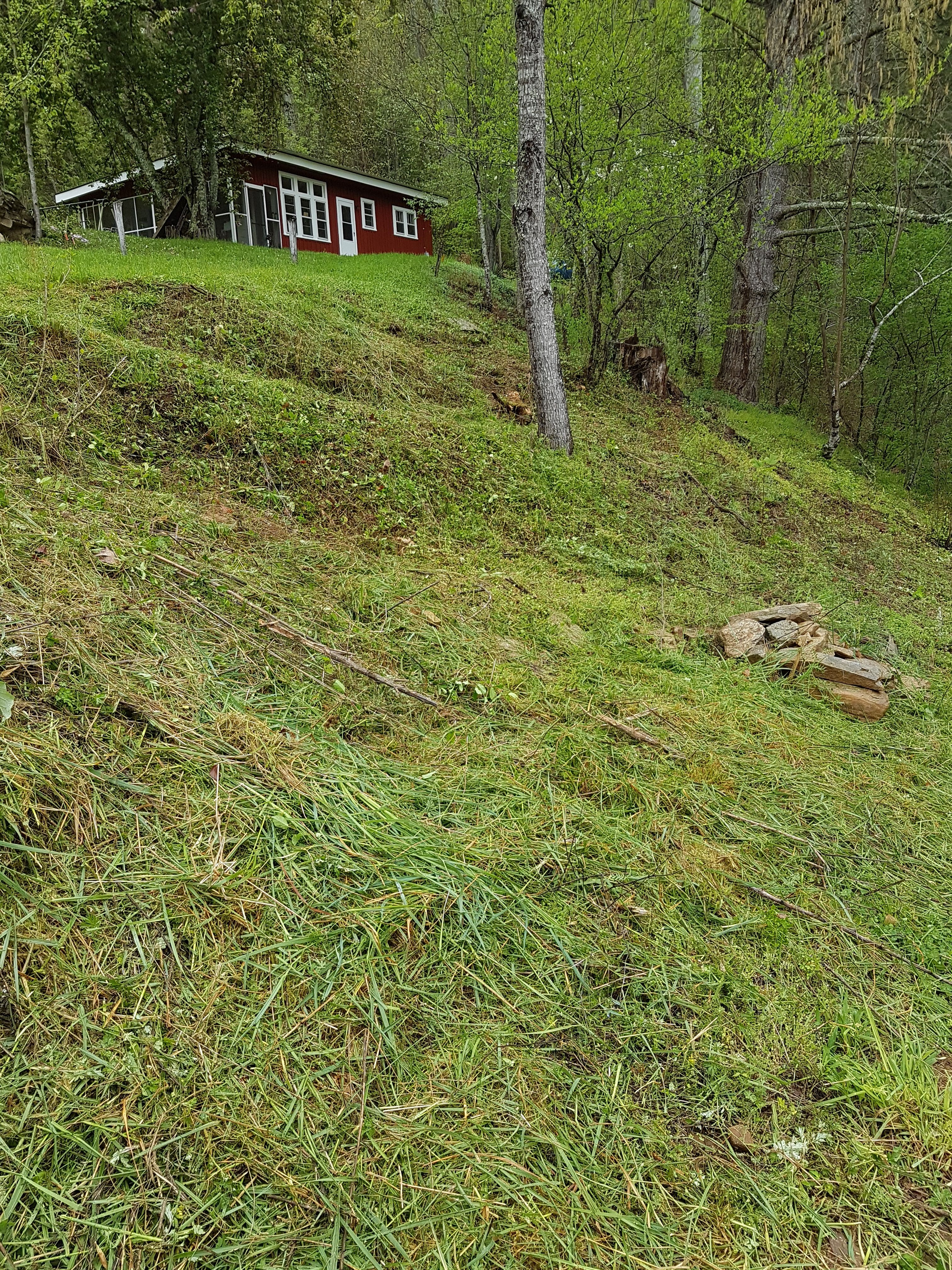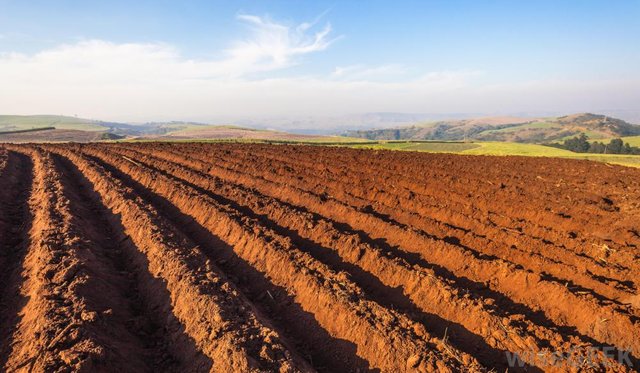How We Kill Our Soil
There are many ways our soil can be destroyed; some human, some not. But by far the most damage is done by humans. This post will focus on the things we humans do that destroy our soil. I’ll also focus on what folks like US do, not what corporations and armies can do. I'll also suggest some simple mitigation practices.
Deforestation:
Every time we cut down a tree or clear out undergrowth we are at risk of losing top soil. Be aware of this risk and work carefully.
Manage Erosion
If we cut trees or clear brush on a slope we are at risk of erosion. The previous root structure has been destroyed and often the grass/weed cover plants have been disturbed. If there is significant water flow it will wash the soil downhill, separating into its various components along the way. In situations like this no one can give you a recipe to follow exactly how to mange this risk. You have to look carefully at your circumstances and use some common sense. If you get it right you’ve learned something; if not and your soil ends up at the bottom of the hill or in the creek you’ve also learned something. Try to get it right the first time. The old adage from carpentry applies here, “measure it twice and cut it once.” Think about the consequences a lot BEFORE you cut that tree.
If your soil isn’t going to wash away then you will want to cover it with something to keep it from blowing away.
Replant
Soil wants to grow stuff so help it. If the soil you exposed is of good quality then sow cover crop seeds or wild flower seeds. I buy cover crop seed by the 50 pound bags. You can get a variety of cover crop seed mixtures in bulk from Center Seeds. (They will mix a custom blend if you ask) I’ve had very good germination rates from theses folks but they serve the conventional agriculture market so their advice might not be that useful. For example they tell you to terminate the cover crop using glyphosate (Roundup). But their seeds have a very good germination rate.
Mulch
If the soil you exposed is not so good you might want to simply mulch it. Again, depending on your specific circumstances you can bring in wood chips, leaves, hay, or whatever. If you can’t bring in some type of cover you might be able to use existing tree litter from the area. Just don’t leave it exposed. It will dry out and blow away or it will be washed away.
Overgrazing
First of all if you’re the one responsible for the overgrazing you should give your animals to a friend and try something like raising radishes. Sorry, but there is no excuse for letting animals live like that but this post isn’t about animal husbandry so I’ll stop.

Over grazing occurs when herbivores, large or small, are enclosed in a space that cannot provide them with enough food. Over grazing is tantamount to starving your animals. (I guess I can’t stop!) If you don’t have the land for food don’t get the animals, no matter how cute they are. If you don’t know grazing rates (animals per acre) don’t get animals. If you don’t know how that rate changes through out the year and with the size of the animal as it grows, don’t get animals.
Land that has been over grazed is land with no ground cover so the soil dries and blows away or is washed away by rain fall. Since the damaging process is usually slow you will often see pioneer species replacing the forage vegetation in your pasture (paddock for those using the Queen’s English). The reason they become established is because the animals don’t like to eat these new plants. They are often thistles, briers, or poisonous. Over grazing and its destructive effect are easily prevented and hard to repair.
Land Use Conversion
Examples of land use conversion are roads, houses or a ponds. Often you don’t have a choice because you need the road, pond, or building space. A best practice here is simply to reclaim the top soil and use it some where else. Or at least put it in a pile and grow cover crops on it until you can use it.

Agricultural Practices:
Conventional agriculture practices are the single most destructive thing we do to our soil. Each of the topics below are a post or two by themselves so I’ll just cover the basics this time.
Tilling Practices
Put simply, bare, exposed soil should be avoided. If you feel must remove all vegetation BEFORE you plant your garden just make sure you cover the soil AFTER you plant. Hay, straw, leaves, or wood chips are all great ways to cover soil. If your plot is sizeable you might use a tractor, mechanical or animal, to get the job done. Just plant quickly and cover it when your finished planting. Better still learn which plants complement each other and let them grow together using no-till techniques.

Source
Agrochemical Usage
This one practice is more difficult to say no to IF you have a significant amount of land to tend. Even organic farming uses agrochemicals. They’re just not as poisonous as the conventional ones. The problem with commercial chemicals is that they are not selective in what they kill even though they imply that they are. And since the soil is a living organism that must remain in balance killing even one species will often starve others into collapse. It’s easy to see at a macro level. If you kill coyotes and snakes then the rodent population explodes; conversely, if you eliminate the rodents then the snakes and coyotes die of starvation (or they start eating your chickens). You need to maintain a proper balance. Your soil is the same except you can’t see 98% of what’s happening without a microscope. And even then most of us wouldn’t know what we were looking for.
The simple advice is not to use ANY commercial chemicals (and even some non-commercial, homemade preparations) UNLESS you FULLY understand how you are impacting the entire micro eco-system. That’s not easy to know for most of us.
The one thing that I’ve found to be true is that the more fertile your soil the less need you have for artificial chemicals. Most people use chemicals because it’s a LOT easier to use chemicals than it is to grow healthy, fertile soil.
Failure to Rotate Crops Properly
Different crops add and subtract different nutrients to/from the soil. If you plant the same crop in the same place the second or third year it won’t grow well. If you rotate two plants with high nitrogen demands they won’t grow well either. The goal is to grow various crops that add and subtract nutrients from the soil that counter-balance each other. This is especially true if growing perennial crops where there is very little rotation. This is a very complex subject and highly variable for each type of soil you have.
Over Cultivation
By over cultivation I mean growing too much in too little space. I know that runs contrary to both conventional agriculture, which is trying to maximize production for profit, and even some more enlightened folks who imply that more yield per less space is a good thing. Just look to nature. Yield does NOT give way to sustainability or health or quality (taste). So why do we think increased yield per acre is good thing?
So the net result is that by attempting to increase yield through over production we selectively remove the majority of nutrients that both plants and animals need to survive, but leave the rest. The system is now out of balance and our soil dies.
No Fallow Periods
Dirt needs to rest just like we need to rest. If it can’t rest it gets tired. When it gets tired it gets grumpy and no matter what we try it just refuses to respond. We produce tired and grumpy soil because we don’t let it rest. I know, “tired and grumpy” aren’t very precise or scientific terms. To be a bit more precise understand that it’s a balance we are trying to maintain. Anything we do to the land/soil is probably not what nature would be doing. It’s therefore “unnatural.” Because we are doing things that tend to be unnatural, even though we’re careful, it is stressing the balance. To remove that stress simply do NOTHING. Let the land lie fallow for a long as it needs. This is why more land is better to have than less.
All we did in this post was to identify some of the ways that we destroy our soil. In the next post we’ll continue with some ideas to restore and maintain healthy soil.
PS - If I don't cite a source for a photograph then it's one I took myself.
Great post!
Thanks for using the ecotrain tag but please do not use it in another post again, since only members of the ecoTrain are authorised to use it and, according to my knowledge, you are not one of them.
The ecotrain tag is meant to indicate membership in the ecotrain group and is not a topic tag for general use.
The Conductor
thanks @likedeeler.. Also, it is not helpful for people to use the ecoTrain tag as it is not a popular tag since it is a group name rather than a general topic .. EcoTrain use it for internal organisation reasons.
Thanks for thinking of us though!
OK
This gem of a post was discovered by the OCD Team!
Reply to this comment if you accept, and are willing to let us share your gem of a post! By accepting this, you have a chance to receive extra rewards and one of your photos in this article may be used in our compilation post!
You can follow @ocd – learn more about the project and see other Gems! We strive for transparency.
Let me know if you have any questions regarding the project or nomination. Hope to hear from you soon!
Certainly! OCD is highly respected and appreciated.
great post, it really is terrible how some of us abuse the earth, intensive agriculture and monoculture agriculture is a huge problem. I've seen it in Spain alot, especially the north and center, found it very upsetting to drive down through the country. Resteemed
Thank you.
It bad all over the world. Thanks for the resteem.
Great information! Thank you for this. We try to practice these tips on our little homestead. Followed and look forward to your future posts!
All most of us can do is be faithful stewards of the land we have. Keep it up.
Loved reading this post, a lot of great information and loved the simplification for others! Excited to read the next post!
Thank you, I'll try to get it written just as soon as I finish getting my STEEM online store live.
Another excellent post on this topic! I'll be looking forward to more of your posts.
Thanks again
I've got a few more to write on soil.